Preface
Scope
Related Documents
1. Introduction
1.1. Goals and Non-Goals of This Specification
1.2. Overview and Terminology
2. Bridge Requirements
2.1. Summary of Key Requirements
2.2. Capabilities Not Supported
2.3. Optional Capabilities
3. Configuration
3.1. Overview of Hierarchical Configuration
3.1.1. Type 0 Configuration Transaction Support
3.1.2. Type 1 Configuration Transaction Support
3.1.2.1. Primary Interface
3.1.2.1.1. Type 1 to Type 0 Conversion
3.1.2.1.2. Type 1 to Type 1 Forwarding
3.1.2.1.3. Type 1 to Special Cycle Conversion
3.1.2.2. Secondary Interface
3.1.2.2.1. Type 1 to Type 1 Forwarding
3.1.2.2.2. Type 1 to Special Cycle Conversion
3.2. PCI-to-PCI Bridge Configuration Space Header Format
3.2.1. Accessing Reserved Registers
3.2.2. Accessing Reserved Bit Fields
3.2.3. Reset Events
3.2.4. Common Format Configuration Registers
3.2.4.1. Vendor ID Register
3.2.4.2. Device ID Register
3.2.4.3. Command Register
3.2.4.4. Status Register
3.2.4.5. Revision ID Register
3.2.4.6. Class Code Register
3.2.4.7. Cacheline Size Register
3.2.4.8. Latency Timer Register
3.2.4.9. Header Type Register
3.2.4.10. BIST Register
3.2.5. Bridge Specific Configuration Registers
3.2.5.1. Base Address Registers
3.2.5.1.1. Memory Base Address Register Format
3.2.5.1.2. I/O Base Address Register Format
3.2.5.2. Primary Bus Number Register
3.2.5.3. Secondary Bus Number Register
3.2.5.4. Subordinate Bus Number Register
3.2.5.5. Secondary Latency Timer Register
3.2.5.6. I/O Base Register and I/O Limit Register
3.2.5.7. Secondary Status Register
3.2.5.8. Memory Base Register and Memory Limit
Register
3.2.5.9. Prefetchable Memory Base Register and
Prefetchable Memory Limit Register
3.2.5.10. Prefetchable Base Upper 32 Bits and
Prefetchable Limit Upper 32 Bits Registers
3.2.5.11. I/O Base Upper 16 Bits and I/O Limit Upper 16
Bits Registers
3.2.5.12. Capabilities Pointer
3.2.5.13. Subsystem ID and Subsystem Vendor ID
3.2.5.14. Reserved Registers at 35h, 36h, and 37h
3.2.5.15. Expansion ROM Base Address Register
3.2.5.16. Interrupt Line Register
3.2.5.17. Interrupt Pin Register
3.2.5.18. Bridge Control Register
3.2.6. Slot Numbering Capabilities List Item
3.2.6.1. Slot Numbering Capabilities ID
3.2.6.2. Pointer to Next ID
3.2.6.3. Add-in Card Slot Register
3.2.6.4. Chassis Number Register
4. Address Decoding
4.1. Address Ranges
4.2. I/O
4.2.1. ISA Mode
4.3. Memory Mapped I/O
4.4. Prefetchable Memory
4.4.1. 64-bit Addressing
4.4.2. 64-bit Address Decoding of Prefetchable Memory
4.4.2.1. Below the 4-GB Boundary
4.4.2.2. Above the 4-GB Boundary
4.4.2.3. Across the 4-GB Boundary
4.5. VGA Support
4.5.1. VGA Compatible Addressing
4.5.2. VGA Palette Snooping
4.6. Subtractive Decode Support
5. Buffer Management
5.1. Prefetching Read Data
5.2. Posting Write Data
5.2.1. Memory Write and Invalidate Usage
5.2.1.1. Forwarding Memory Write and Invalidate
Transactions
5.2.1.2. Promoting Memory Write Transactions
5.2.1.3. Combining Memory Write Transactions
5.2.1.4. Memory Write and Invalidate Disconnects
5.2.1.4.1. Master Disconnected by the Bridge
5.2.1.4.2. Bridge Disconnected by the Target
5.3. Delayed Transactions
5.3.1. Discarding a Delayed Request
5.3.2. Discarding a Delayed Completion
5.4. Exclusive Access Transactions
5.4.1. Delayed Lock-Request Error
5.4.2. Normal Completion
5.5. Ordering Requirements
5.5.1. Summary of PCI Ordering Requirements
5.5.1.1. General Requirements
5.5.1.2. Delayed Transaction Requirements
5.5.2. Ordering of Requests
5.5.3. Ordering of Delayed Transactions
5.5.4. Transactions That Have No Ordering Constraints
5.5.5. Delayed Transactions and LOCK#
5.5.6. Error Conditions
5.5.7. Illustrations of the Use of the Ordering Rules
5.6. Special Design Considerations
5.6.1. Read Starvation
5.6.2. Stale Data
5.6.3. Deadlocks
5.7. Combining Separate Writes Into a Single Burst Transaction
5.8. Merging Separate Writes Into a Single Transaction
5.9. Collapsing of Writes
6. Error Support
6.1. Introduction
6.2. Parity Errors
6.2.1. Address Parity Errors
6.2.2. Read Data Parity Errors
6.2.2.1. Target Completion Error
6.2.2.2. Master Completion Error
6.2.3. Non-Posted Write Data Parity Errors
6.2.3.1. Master Request Error
6.2.3.2. Target Completion Error
6.2.3.3. Master Completion Error
6.2.4. Posted Write Data Parity Errors
6.2.4.1. Originating Bus Error
6.2.4.2. Destination Bus Error
6.3. Master-Aborts
6.3.1. Non-posted Transactions
6.3.2. Posted Write Transactions
6.3.3. Exclusive Access Master-Abort
6.4. Target-Aborts
6.4.1. Internal Errors
6.4.2. Non-Posted Write Transactions
6.4.3. Posted Write Transactions
6.5. Discard Timer Timeout Errors
6.6. Secondary Interface SERR# Assertions
7. PCI Bus Commands
7.1. Summary of Bridge Transaction Command Support
8. Arbitration and Latency Requirements
8.1. Bridge Interface Priority
8.2. Secondary Interface Arbitration Requirements
8.3. Bus Parking
8.4. Latency Requirements
9. Interrupt Support
9.1. Interrupt Routing
10. Signal Pins
10.1. Primary PCI Interface
10.1.1. Required Signals
10.1.2. Optional Signals
10.2. Secondary PCI Interface
10.2.1. Buffered Clocks
10.2.2. Required Signals
10.2.3. Optional Signals
11. Initialization Requirements
11.1. Reset Behavior
11.1.1. Secondary Reset Signal
11.1.2. Bus Parking During Reset
11.2. System Initialization
11.2.1. Assigning Bus Numbers
11.2.2. Allocating Address Spaces
11.2.3. Writing IRQ Numbers into Interrupt Line Register( s)
11.3. PCI Display Subsystem Initialization
11.3.1. Initial Conditions
11.3.2. Initialization Algorithm
11.3.3. Algorithm Pseudo-code
12. VGA Support
12.1. VGA Support
12.1.1. VGA Compatible Addressing
12.1.2. VGA Snooping
12.1.2.1. VGA-compatible Graphics Devices
12.1.2.2. Non-VGA-compatible Graphics Devices
12.1.2.3. PCI-to-PCI Bridges
12.1.2.4. Subtractive Decoding Bridges
12.2. VGA Configuration Restrictions
12.3. VGA Palette Snooping Configuration Examples
12.3.1. VGA and GFX on PCI Bus 0
12.3.2. GFX Downstream of a Subtractive Bridge
12.3.3. VGA Downstream of a Subtractive Bridge
12.3.4. GFX Downstream of a Positive Bridge
12.3.5. VGA Downstream of a Positive Bridge
12.3.6. VGA and GFX Downstream of a Subtractive Bridge
12.3.7. VGA and GFX Downstream of a Positive Bridge
12.3.8. GFX Downstream of VGA on the Same Path
12.3.9. VGA Downstream of GFX on the Same Path
12.3.10. GFX Far Downstream of VGA on the Same Path
12.3.11. VGA Far Downstream of GFX on the Same Path
12.3.12. Illegal - Write Never Gets to GFX
12.3.13. Illegal - Write Never Gets to VGA
12.3.14. Illegal - Two Devices Respond to Writes
13. Slot Numbering
13.1. Introduction
13.2. Device Number and Slot Number Assignment Rules
13.3. The Slot Number Register
13.4. The Chassis Number Register
13.5. A Slot Numbering Example
13.6. Run-Time Algorithm for Determining Chassis and Slot Number
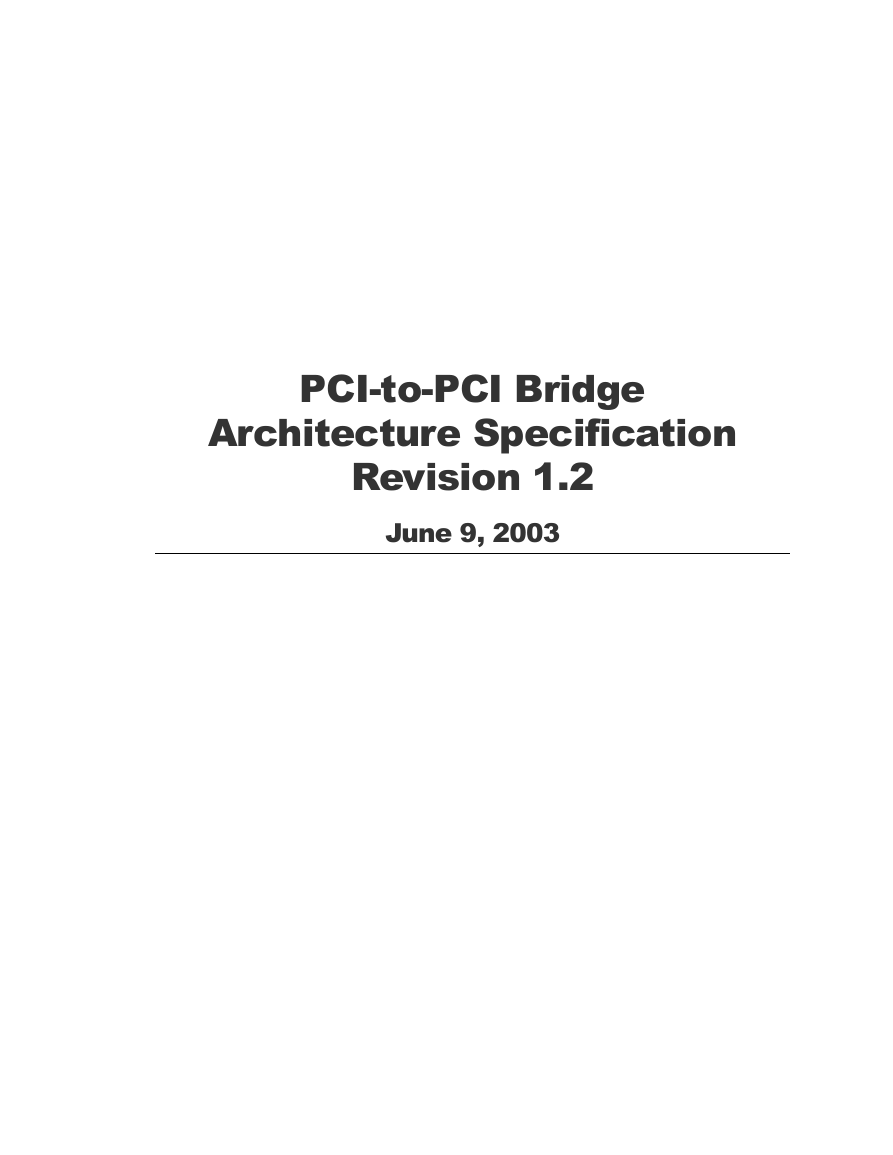
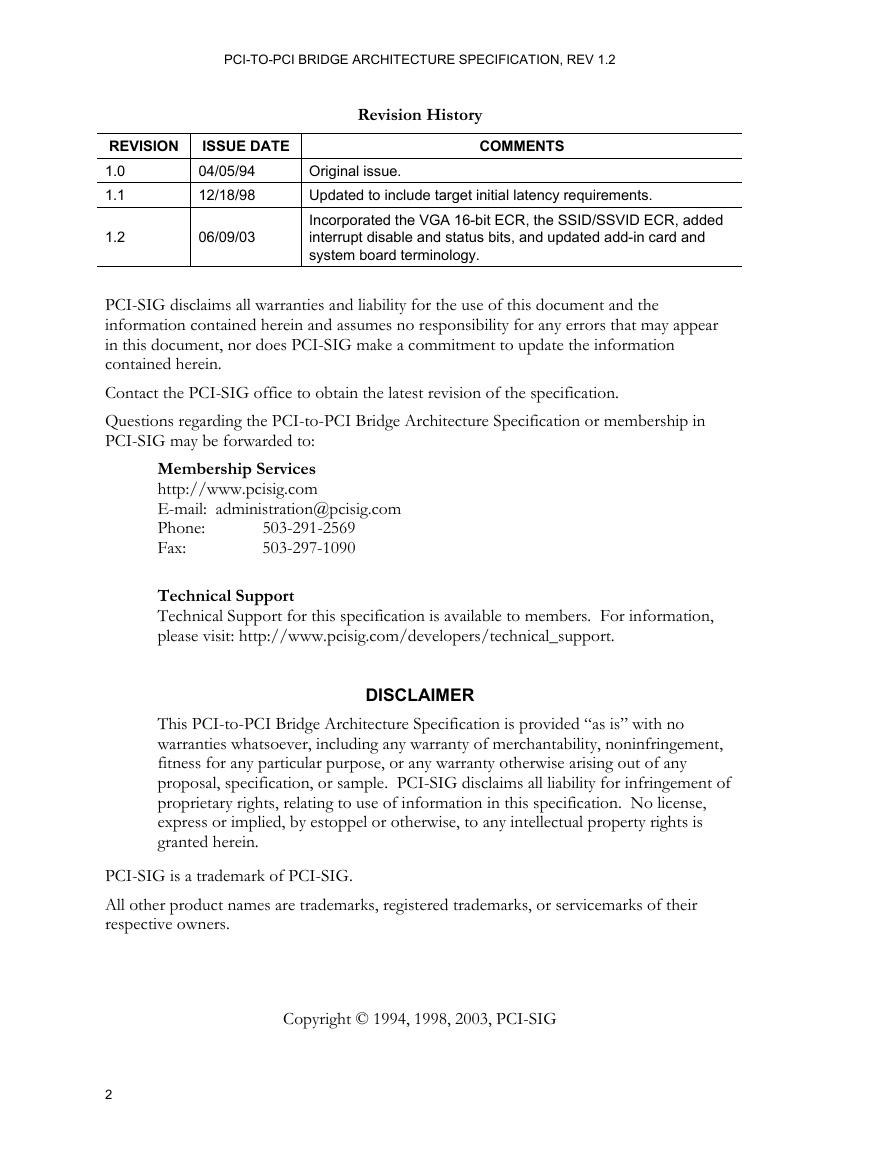
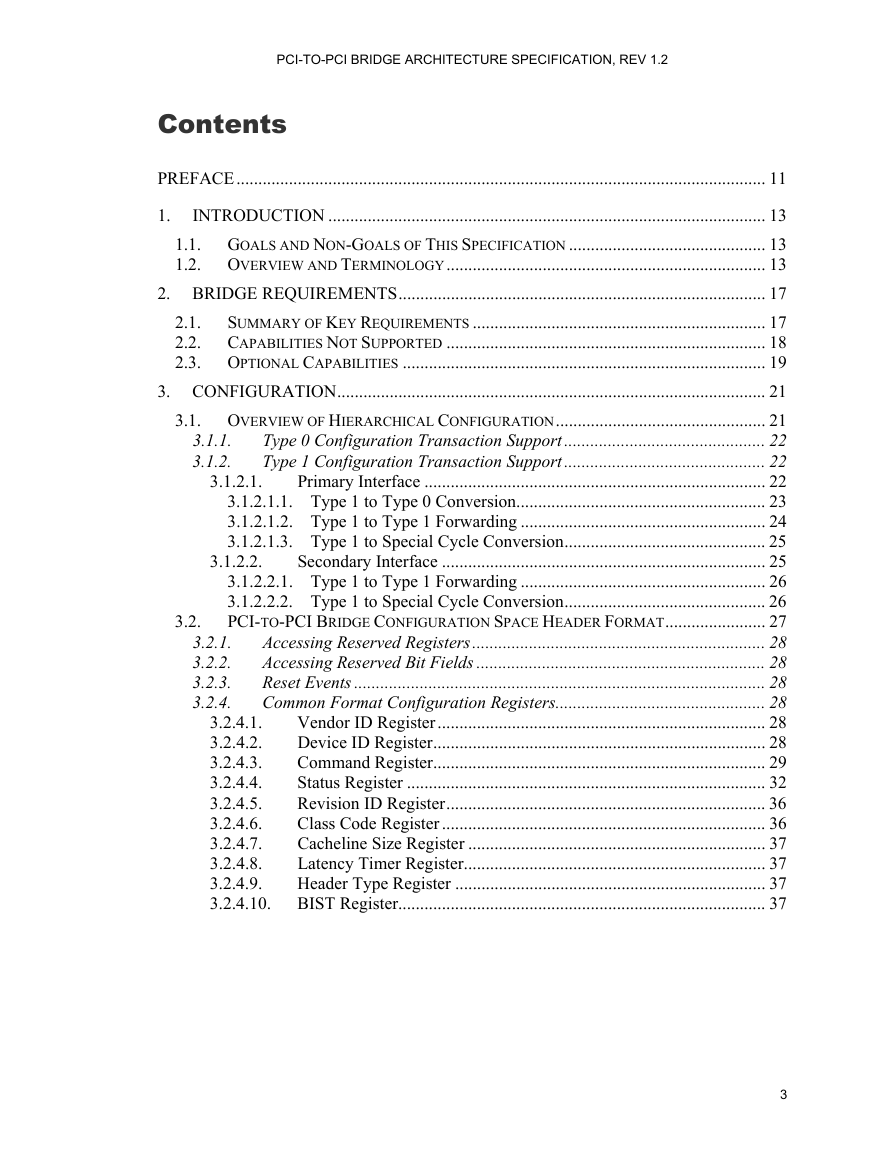

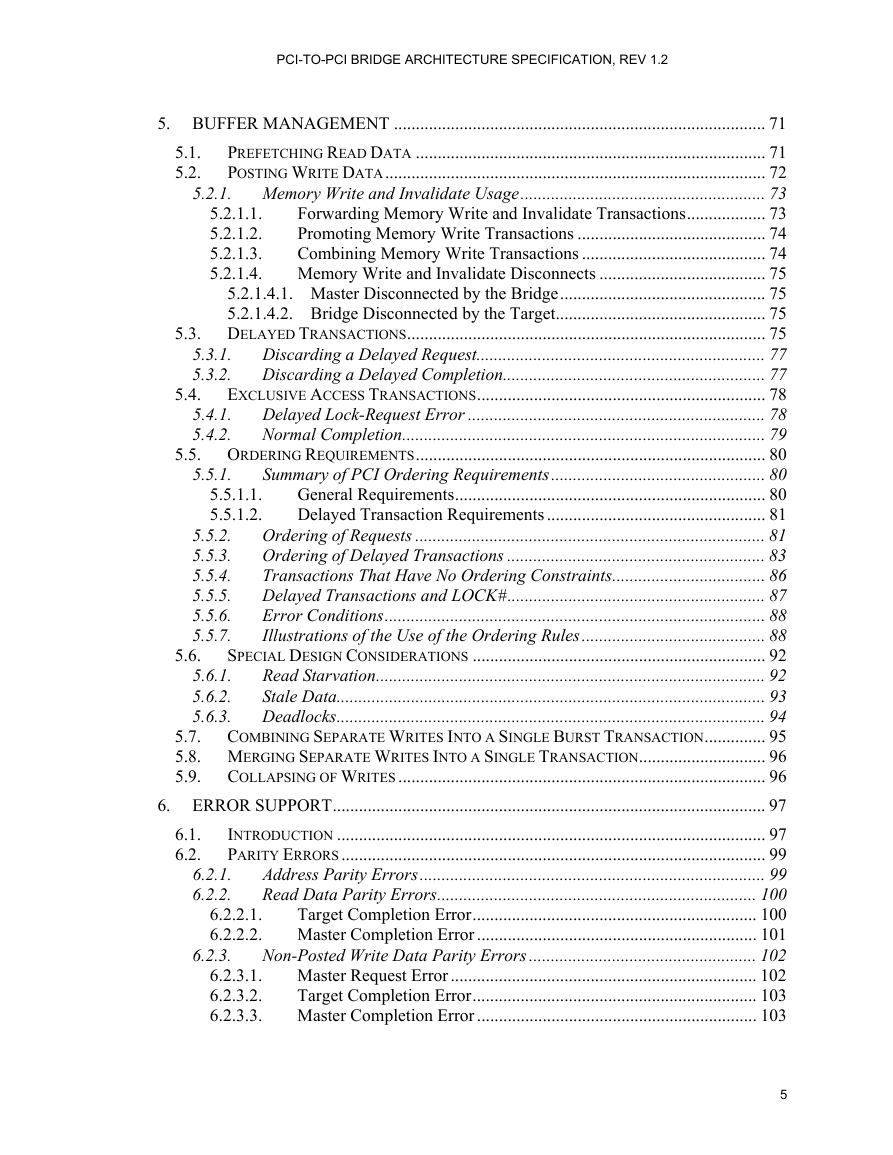
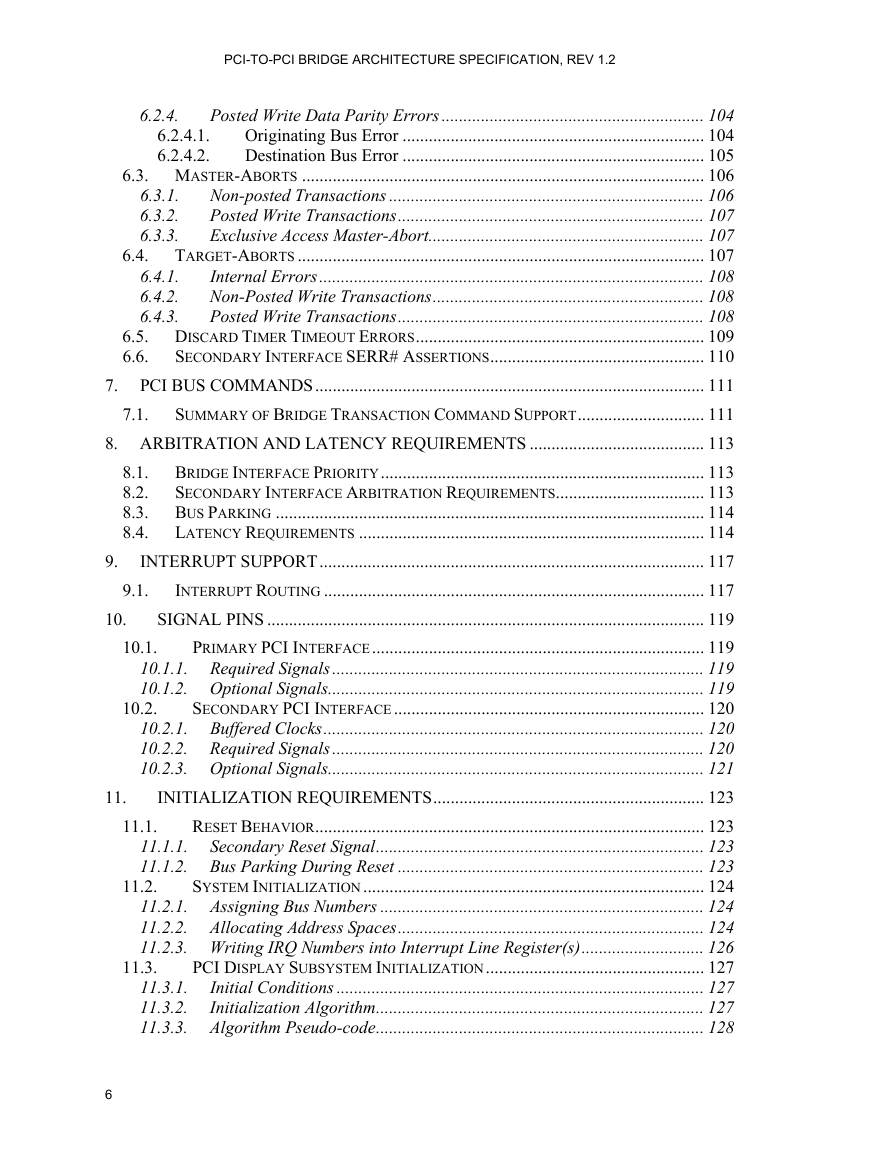
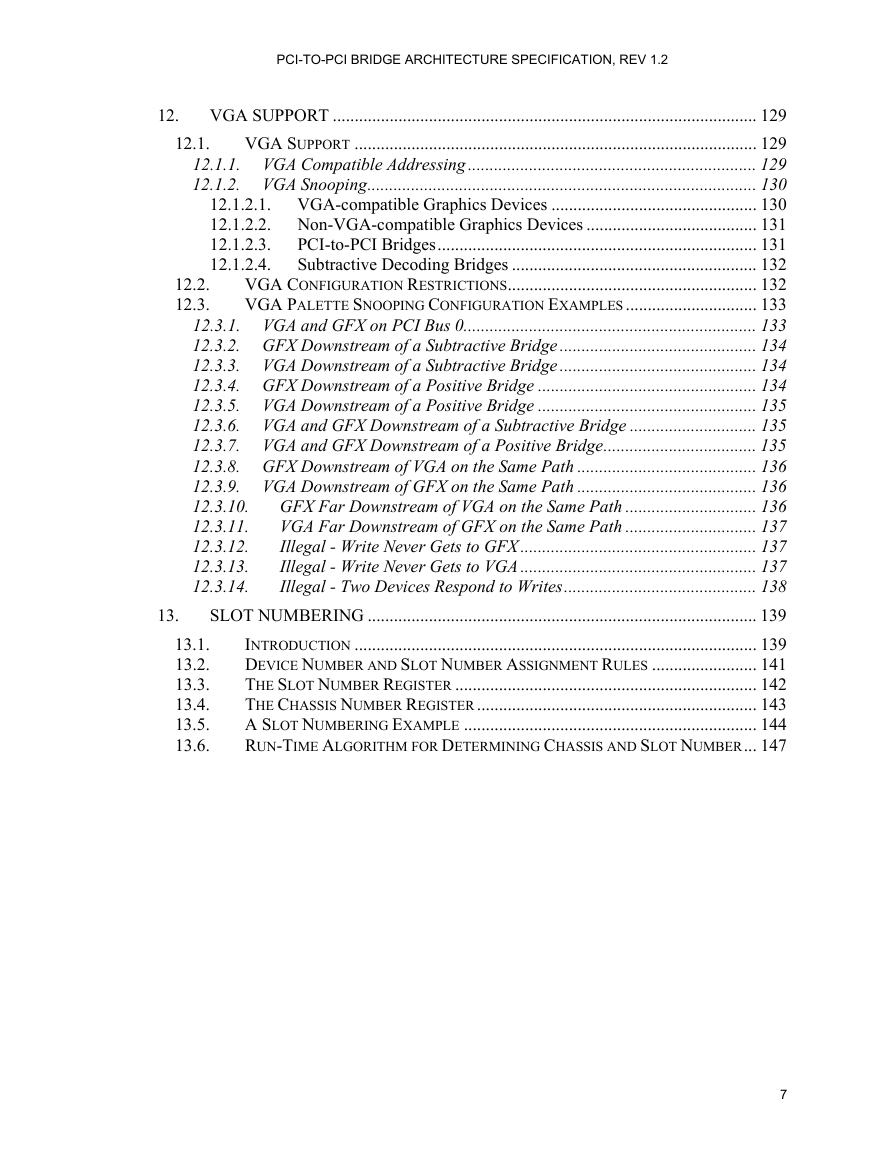









 2023年江西萍乡中考道德与法治真题及答案.doc
2023年江西萍乡中考道德与法治真题及答案.doc 2012年重庆南川中考生物真题及答案.doc
2012年重庆南川中考生物真题及答案.doc 2013年江西师范大学地理学综合及文艺理论基础考研真题.doc
2013年江西师范大学地理学综合及文艺理论基础考研真题.doc 2020年四川甘孜小升初语文真题及答案I卷.doc
2020年四川甘孜小升初语文真题及答案I卷.doc 2020年注册岩土工程师专业基础考试真题及答案.doc
2020年注册岩土工程师专业基础考试真题及答案.doc 2023-2024学年福建省厦门市九年级上学期数学月考试题及答案.doc
2023-2024学年福建省厦门市九年级上学期数学月考试题及答案.doc 2021-2022学年辽宁省沈阳市大东区九年级上学期语文期末试题及答案.doc
2021-2022学年辽宁省沈阳市大东区九年级上学期语文期末试题及答案.doc 2022-2023学年北京东城区初三第一学期物理期末试卷及答案.doc
2022-2023学年北京东城区初三第一学期物理期末试卷及答案.doc 2018上半年江西教师资格初中地理学科知识与教学能力真题及答案.doc
2018上半年江西教师资格初中地理学科知识与教学能力真题及答案.doc 2012年河北国家公务员申论考试真题及答案-省级.doc
2012年河北国家公务员申论考试真题及答案-省级.doc 2020-2021学年江苏省扬州市江都区邵樊片九年级上学期数学第一次质量检测试题及答案.doc
2020-2021学年江苏省扬州市江都区邵樊片九年级上学期数学第一次质量检测试题及答案.doc 2022下半年黑龙江教师资格证中学综合素质真题及答案.doc
2022下半年黑龙江教师资格证中学综合素质真题及答案.doc